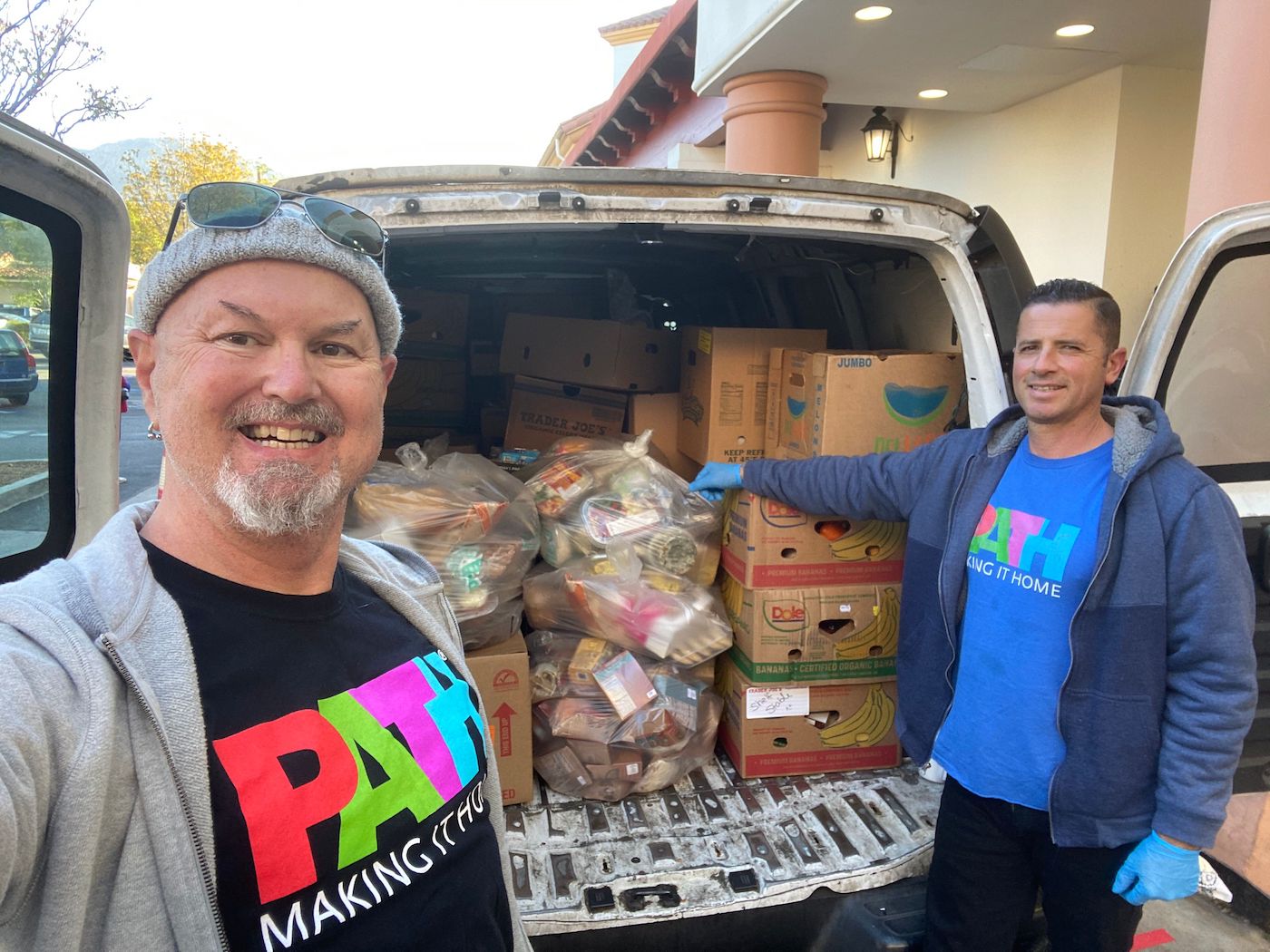Finding a Compassionate PATH: Nonprofit has Increased Homelessness Outreach Through Partnerships

The COVID pandemic was surely a challenge for just about everyone in Santa Barbara and all around the world, but some communities were harder hit than others. Not so much here in the city or Montecito but consider what it must have been like to go through the 15 months of lockdowns, surges and protocols as someone who is homeless, even, or maybe especially, those at one of the shelters around town, where close confines could have caused quite a crisis.
“It was definitely a challenge to keep people not only safe, healthy, and cared for while implementing all of the COVID protocols in an interim housing facility,” said Tessa Madden Storms, PATH’s Santa Barbara regional director and its senior director of philanthropy, media, and marketing.
“We were lucky that we had the space to physically distance, so we didn’t have to dramatically reduce our capacity and could practice safe social distancing even during nighttime hours in the sleeping quarters. But we stopped taking new intakes at all for the better part of last year to protect folks and keep them safe and well.”
Indeed, Madden Storms said PATH — or People Assisting the Homeless — was “really proud of ourselves” because the organization had one or two positive cases the entire time before the surge in December and January, proving, she said, that the nonprofit was able to handle the crisis, due partly to its partnerships with other organizations in Santa Barbara. Among those are County Public Health, Cottage Health, County Behavioral Wellness, CityNet, County Probation, Home for Good, and AmeriCorps. And when the numbers increased, innovative ideas such as finding motel room space for the COVID-positive to serve out their quarantine, a program PATH helped run for the better part of a year.
“What the pandemic really showed us is the resilience of our staff and the importance of community partnerships,” Madden Storms said. “All of the providers in town and across the county came to the table in new and more consistent ways than ever before to collaborate on addressing the huge social and health concern for this highly vulnerable population that we serve. It really defined how our community adjusts, both internally within our walls and in problem-solving for those who were at such high risk living on the street.”
But PATH has been gearing up its forward-thinking solutions well before the COVID crisis, Madden Storms said.
“These are solutions that providers like us have been advocating for, for years. It was interesting that it took a global pandemic for some of them to come into place, but it was really positive that the community has been investing more and getting more creative with the roles that each of us can play in getting people off the streets, out of the shelter system, and into their own permanent homes.”
PATH’s multi-pronged approach is itself somewhat innovative as rather than just providing temporary shelter the local organization includes: the Interim Housing facility at what used to be called Casa Esperanza before its merger with PATH; a Rapid Re-Housing for those suffering temporary homelessness; a Permanent Supportive Housing program; and Employment Services to help individuals experiencing homelessness find and retain employment, while also working toward long-term housing, health, and stability goals. It’s all in service of PATH’s mission to end homelessness for individuals, families, and communities by providing housing, person-centered supportive services, and community engagement.

Madden Storms believes the problem can be solved, noting that the local homeless population numbers approximately 2,000. It’s too many, of course, but it’s also possible for the community to get really close to functional zero of ending homelessness.
Madden Storms reiterated that PATH can’t make that happen on its own. But, she said, “the most special thing about the Santa Barbara community is that we have an incredible group of people who advocate and support and champion the work that we do like our ambassadors. It’s uniquely special because we have really only been in the community for six years. To have that support is really second to none.”
And now that the pandemic is largely behind us — although full-time mask-wearing and other restrictions remain in place at PATH’s Cacique Street facility — there’s the hope that the fading threat and warmer weather doesn’t result in the community forgetting about people who are still very much in need, Madden Storms said. On the theory that nobody is truly housing-resistant, PATH is adding an outreach specialist to its local team.
“What’s at the core of our model and our approach is this concept of meeting people where they’re at”
— Tessa Madden Storms, PATH’s Santa Barbara Regional Director
“It requires a personal connection,” she explained. “What’s at the core of our model and our approach is this concept of meeting people where they’re at. The outreach specialist is really going to help us connect with people who are actively living on the streets, those neighbors who are homeless, meet them, engage with them, and understand them and start to build relationships.
“And not only with the individuals experiencing homelessness in our neighborhood, but also the businesses and community at large to connect the communities.”
The goal is to reach even the most intractable of the street dwellers and make large strides toward accomplishing PATH’s mission, Madden Storms said.
“It might take a couple of weeks or a month, or it might take a number of months to a year, but that constant engagement, communication, and relationship-building could result in someone being willing to come into PATH or another facility. That’s what starts them on their journey home.”





